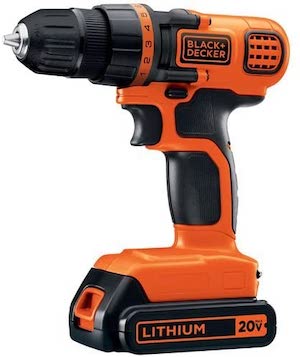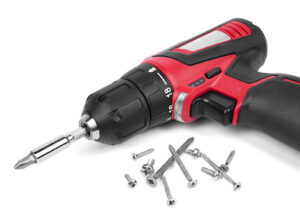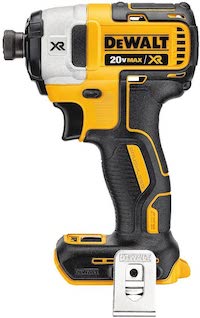You might not know it, but there’s a battle that wages at the tool store. This silent battle is often overlooked when it comes to tools, overshadowed by saws and Gearlamps, and other essential items for a complete toolbox. This intense battle is between the cordless drill and the impact driver, two types of drills that function differently yet often meet the same goal.
It can be hard even to understand the difference between them is. While both are rotary tools in a gun shape that exist to turn bits, it all comes down to exactly how they turn them. The significant difference between a cordless drill and an impact driver is the drivers’ ability to sense resistance and compensate for it. On the other hand, the cordless drill offers continuous and consistent drilling that, although it slips easier than the impact driver, is handy for many things.
How an Impact Driver Works:
An impact driver senses resistance and compensates it by producing torque bursts or twisting force, really rapidly. This allows the machine to stay engaged with the screw or other bit and helps take the pressure off of whoever is holding the drill. However, a cordless drill is a convenient tool that provides a steady experience driving a bit in. It’s often easier to drive bits with an impact driver. Although the cordless drill tends to be the most popular of the two, it certainly does not discount a rising star: the impact driver. So how do you use this information to help you with your DIY or construction projects? Keep reading to read more about impact drivers and cordless drills and when exactly you should be using them.
Example of an Impact Driver
How a Cordless Drill Works:
Cordless drills offer rotational force to drive a screw into a surface. It’s handheld, gun-shaped, and a convenient and reliable tool. These are part of an essential toolbelt for anyone that regularly does DIY or construction or even home projects. A cordless is an incredibly useful tool designed to drill holes and drive screws efficiently and steadily. Part of its versatility lies in its keyless chuck (which is essentially a connector piece between the drill and the bit, one that automatically clenches down on the bit). Most cordless drills accept a diverse range of round, hex-shank, hole saws, rotary sanders, screw-driving, wire-wheel brushes, and many other kinds of drill bits. These cordless drills often come with a slip clutch (these allow the torque and drilling speed to be adjusted).
Let’s say you need to screw in an average to small screw into the wall to hang a new picture for your wife or a fresh coat hook for your apartment. When in doubt, go for the cordless drill. The drill’s steady turn will help you keep control and not drive the screw too far too fast. Just be wary of not putting enough pressure behind the drill. If you don’t put plenty of force behind a cordless drill, your screw is in danger of “camming out.” Camming out is a term to describe a drill bit that’s slipped out of the screw and wreaked havoc with the screw head, leaving it unable to go further and very difficult to remove.
Example of a Cordless Drill

Another instance where the cordless drill reigns supreme is when you need drill holes.
For straight and simple drilling, you probably need a very constant and steady pressure to create the best drill. While you can use an impact driver, a cordless drill might do a better job (as the name might suggest.) If you’re drilling with a tiny bit (like a screw for decoration), it is the best option, as we mentioned above. The steady pressure that this drill provides is more comfortable to control in most circumstances. With small screws, it’s easy to drill them too far, and cordless is more manageable. The cordless drill
On the other hand, the impact driver is what you could consider the more aggressive of the two drills. Impact drivers are not as widely used as cordless drills, but they are gaining popularity for all construction purposes. This could be due to its powerful performance, which drills down with precision and ease. Rather than the keyless chuck, like its competitor, this drill usually exclusively accepts hex-shank drivers. It is the special agent of power tools- it has one mission, and it pursues that mission like no other. Impact drivers can drive significant, big fasteners that could hinder most other drills.
 While it uses rotation force like the cordless drill, it does that in quicker and more powerful bursts. This tool combines all of its power to drive through the thickest wood with the most fastener sizes you throw at it. It gives enough strength to work through the most challenging projects. Another perk of the impact driver is that all that power comes from within. With typical drills, the person holding the drill is applying quite a bit of pressure. It’s often more comfortable to drill with the impact driver (although less easy to manage) because the person working with it doesn’t have to have to apply as much pressure as they would when using other drills.
While it uses rotation force like the cordless drill, it does that in quicker and more powerful bursts. This tool combines all of its power to drive through the thickest wood with the most fastener sizes you throw at it. It gives enough strength to work through the most challenging projects. Another perk of the impact driver is that all that power comes from within. With typical drills, the person holding the drill is applying quite a bit of pressure. It’s often more comfortable to drill with the impact driver (although less easy to manage) because the person working with it doesn’t have to have to apply as much pressure as they would when using other drills.
If you’re renovating something, building a deck, installing tile, working on large pieces of furniture, or anything that necessitates a host of screws, you might want to use an impact driver for your project. Or, if you’re using large or long screws, the driver could be ideal, as well. While and impact driver does not have a slip clutch, it does offer a powerful and concise drilling experience. While impact drivers might not be quite as versatile as your typical cordless drill, the benefits of ease and power might outweigh the costs. Plus, impact drivers are typically shorter and stubbier than other drills, making them much easier to use in tight spaces. And on the off chance that you need something even smaller, there are compact impact drills. That’s right- little drills that are mighty.
A question common question regarding impact drills is if there are particular bits made just for them? Since they only take a hex shank, unlike the versatile cordless drill, there are bits made especially for impact drivers, so you don’t have to wonder. Impact drivers use a unique piece to run the bits that you place in them. These impact driver hex bits most often come with shafts that are 1/4 inches (you can usually use that in a typical drill, too!). These special hex bits are convenient for your impact drill and should be at your local tool or hardware store.
Conclusion
A cordless drill is versatile and takes many kinds of bits. In many ways, a cordless drill mimics a tool used by a dentist! It’s an essential tool for every toolbox and works perfectly for many things. Hanging pictures or other small jobs around the house is ideal for a cordless drill. Putting together a chair or a smaller piece of furniture is also suitable for a cordless drill. If you intend to straight drill, this drill will be the one for the job. The steady motion and the versatile bits make it an all-around great pick.
On the other hand, and the impact driver is best for more significant projects. Impact drivers only take hex bits, and there are specialized bit types for it, as well. Impact drivers are powerful, less likely to slip, and require less outside pressure. They are excellent for large or long screws and any big project, like massive furniture, a deck, or remodeling projects. The war between the impact driver and the cordless drill isn’t easily one.
Each tool is ideal for different things. Although most people are already in possession of a cordless drill, you may want to think about investing in an impact driver. If you do a lot of DIY or home remodeling, we recommend trying out an impact driver (or even a compact one, to start). There is no clear winner, but we will admit that the impact driver offers superior performance and power. However, the cordless drill can’t be beaten when it comes to versatility and the ability to handle the small stuff.
If you’re wondering where to buy either a cordless drill or impact driver, have no fear! There should be no shortage of these two construction tools at your local handyman store, like Home Depot, etc. The impact driver and cordless drills are two tools that are very commonly bought, so you might even be able to find some good deals online. Remember, when you are trying to decide what kind of drill you want to buy, there are a few things to consider:
- On what kind of projects will the drill be used?
- Do you usually work in tight spaces or more expansive spaces?
- What size of the screw will I use, mostly?
Once you ask yourself these questions, you can quickly identify what kind of drill you need with our guide above. Although finding the right tools for you and your home can be overwhelming, our guide should help you figure out the type of drill you need. If you still have questions, you can usually ask someone at your local tool shop. There should be someone there to answer your further questions.

